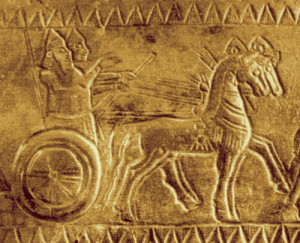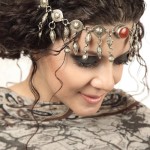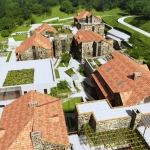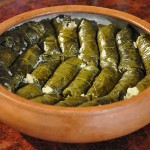
Carts were moved by a bull. Horse as a means of transportation of carts was used later, after the improvement of carts and invention of the war-chariots. It is characteristic that in written sources for the first time the tamed horses are mentioned in the ancient states of the Armenian Highland, in Aratta (28th – 27th centuries B.C.). Four-wheeled and two wheeled loading wooden carts and war-chariots were excavated in Ltchashen, Lower Getashen, Lori Fortress and Katie mausoleums. Together with the bronze models of two wheeled carts and four wheeled war-chariots and battle carts these findings help us to learn about the means of transportation in Armenia in the second half of the 2nd millennium B.C. The wooden carts in Ltchashen village are the oldest models discovered in Armenia. War-chariots were widely used in the 18th – 17th centuries. B.C., transforming warfare and proving to be of decisive significance in deciding the end of the battles as an offensive force. During the 15th – 13th centuries B.C. Hayasa Kingdom of the Armenian Highland was bringing to the battlefield against the Hittite country 10,000 RITUAL STATUARY infantry and 700 war-chariots, which was a significant force for that period. The bronze models discovered in Lori Fortress and the three models found in Ltchashen give a picture of the types of war-chariots that were used in Armenia. The war-chariots have separately smelted bodies. Тhey are small, porous on three sides and open at the back. On pictures of war-chariots a running deer is portrayed in front of the horses. Two soldiers are shown, standing on the upper part of the cart. They have high-top helmets, and their swords are hanging from their belts, they are holding each other with one hand. With the other hand they are holding their helmets. The war-chariots are similar in form to small Asian and Khetish carts. In the first millennium B.C. the carts and war-chariots were still widely used in the Armenian Highlands. For example, military carts formed as a special type of army; carts and coaches were improved and continued to be used for several more centuries. Parts of iron wheels from the Hellenistic period (3rd–1st centuries B.C.) were discovered in Armavir during excavations. Greek inscriptions from the 3rd century B.C. record the donation of a four-wheeled coach from the Areg-Mihr-Apollo and Lusin Anahit-Artemis Temple in Armavir. On the back side of a silver coin of Artavazd II a four wheeled coach was portrayed. Historians of the early medieval period had a lot of information about coaches. The wheel was considered to be the symbol of the sun. Referring to Hittite and other Indo-European nations, every day the god of sun traveled in the firmament on a four-wheeled coach. The four horses meant traveling to A number of statuary were found in the Armenian Highland dating to the 2nd millennium B.C., among
which was the one dating to the 14th – 13th centuries that was discovered in one of the mausoleums of Shirakavan in 1978. The bronze statuary is 23.5 centimeters high. The statuary is made of wax mold and it extends horizontally from central axis. It consists of an axis with earth like ornaments, the wings of which move up and down. The wings have small figures of a
man, a lion and birds on its ends. Statuettes of a man and a lion are on a pedestal that turns on its axis. The figure of an armed man has a helmet with an arched ledge on his head. A box of arrows, decorated with curved ornaments, is on his shoulder. The same decorations are seen on his belt. The round shield in his left hand is ornamented with coiled circuits that radiate from the centre. The weapon in the right hand of the figure has not been retained. The man has riding period boots on, and his eyes are stressed with blue clay. The lion’s eyes are carved in the same way, and a belt is seen on the mane with arched ledges. The group of statuettes as a unique sample is of invaluable significance in disclosing the religious beliefs of our ancient four parts of ancestors. The bisexual man is a sympathetic world. so dersn a war chariot are chasng a deer The anchor-shaped wings of the stat (Ltchashen, 14th 13th centur es B.C.) uettes express the idea of Heaven and Earth, the upper and lower worlds, which are united by a cosmic tree. The latter is represented by the axis, which is decorated with ear-shaped ornaments.
The Armenian legends say that there was a time when Earth and Heaven were situated very close to each other. The birds were mediators who served as messengers or heralds between Earth and Heaven, uniting the two by delivering god’s will to a human
being and the demand of the human being to god.
Carts and War-Chariots
Back To Top










